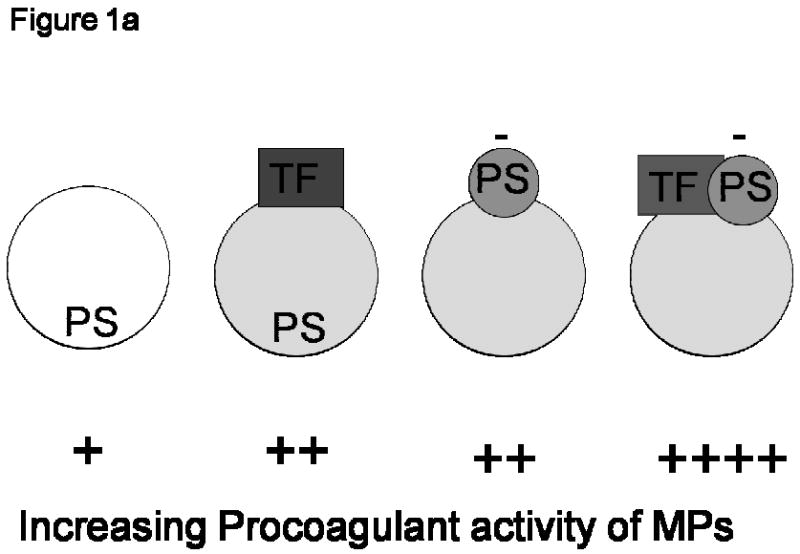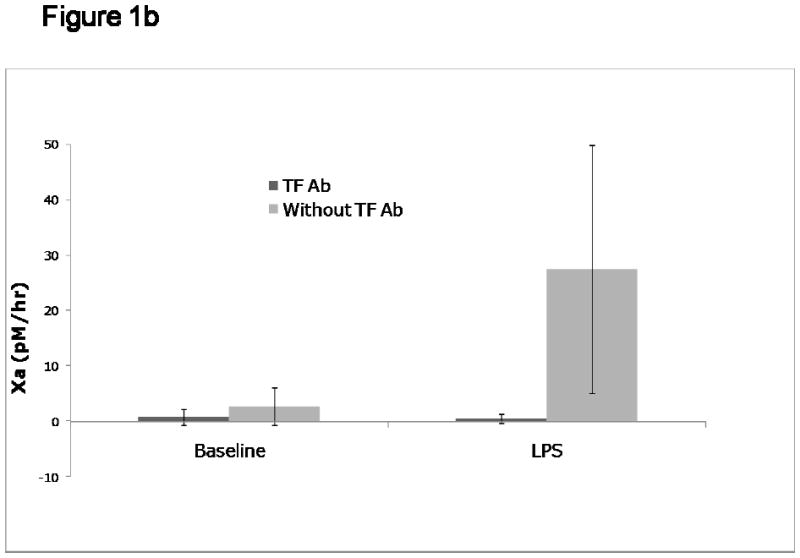Figure 1.


Figure 1a: Cartoon representing the hierarchical procoagulant activity of microparticles (MPs). Depending on their cellular origin, the procoagulant potential of circulating MPs may be either tissue factor (TF)-dependent and/or TF-independent. The MP on the left hand side that maintains PS on the inner leaflet, and does not express TF, would express very little (if any) procoagulant activity. The negative bars (-) adjacent to ‘PS’ indicate the surface expression of negatively charged PS. MPs expressing both TF and negatively charged surface phosphatidylserine (PS), as represented by the particle on the extreme right hand side, would theoretically contribute most to fibrin generation. Figure courtesy of Dr Nigel Mackman.
Figure 1b: TF-dependent vs. TF-independent procoagulant activity on circulating MPs. Platelet free plasma was obtained from human volunteers exposed to endotoxin, and assayed for MP-TF activity as previously described (22). The concentration of factor Xa generated following the addition of 5 nM factor VIIa and 150 nM factor X for 6 hours is shown on the y-axis. Both at baseline and at 4 hours after LPS administration, the Xa generated with and without the addition of an inhibitory polyclonal antibody to TF is shown.
